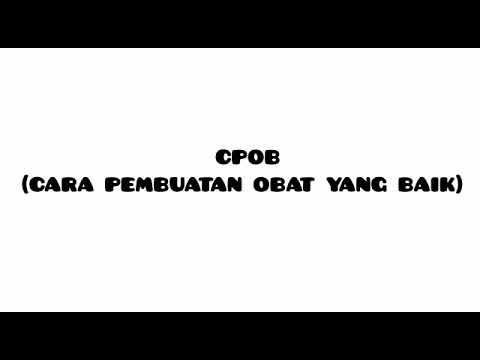Programas de Autocontrole
Summary
TLDRThis video script provides an in-depth overview of self-control programs within the meat and animal product industry, focusing on protocols required by government regulations for food safety and hygiene. It explains the role of various certifications and inspections, including municipal, state, and federal levels, as well as international certifications for exportation. Key aspects of implementing and monitoring these programs are discussed, such as tracking animal health, maintaining hygiene, and ensuring food quality. The script also highlights the importance of continuous training, corrective actions, and preventive measures within meat production facilities to ensure compliance and product safety.
Takeaways
- 😀 The Brazilian meat and animal products industry is required to implement self-control programs, regulated by MAPA (Ministry of Agriculture, Livestock, and Food Supply).
- 😀 These self-control programs go beyond basic hygiene practices and include specific protocols for ensuring product quality and safety, such as animal welfare.
- 😀 The implementation of these programs involves creating and training staff on documents and procedures that become part of the company's daily culture, ensuring self-sufficiency in operations.
- 😀 Monitoring and verification are key elements in identifying, correcting, and preventing failures to ensure hygienic and sanitary quality of products.
- 😀 MAPA’s primary role is to regulate and monitor these self-control programs, ensuring compliance for both internal and export markets.
- 😀 To export products, companies need certifications like SIF (Federal Inspection Service) or CISBE, which ensure the products meet national and international standards.
- 😀 The importance of traceability in the meat industry is highlighted, ensuring products can be tracked from origin to final consumer.
- 😀 Programs like HACCP (Hazard Analysis and Critical Control Points) are integrated into the self-control program to manage food safety risks.
- 😀 Companies must manage not only food safety but also ensure product authenticity, preventing fraud such as mislabeling cuts of meat.
- 😀 The program includes various specific guidelines and certifications, such as FSSC 22000 for export to the U.S., and BRC certification for Europe, which are critical for international trade.
Q & A
What are control programs in the meat and meat product industry?
-Control programs are protocols established to monitor and ensure the hygienic and sanitary quality of animal-origin products. They are mandatory for industries processing animal products and are regulated by the MAPA (Brazilian Ministry of Agriculture, Livestock, and Supply). These programs go beyond basic good practices and include measures like animal welfare, monitoring, and verification processes.
Who is responsible for implementing control programs in the industry?
-The responsibility for implementing control programs lies with the industry itself. The company must develop and execute the necessary documents, train employees, and ensure the procedures become part of the company culture. The government’s role is to verify that the industry is complying with the regulations.
What is the difference between 'implanting' and 'implementing' control programs?
-'Implanting' refers to putting the control program documents into action, which involves printing the documents, training employees, and setting up the necessary infrastructure. 'Implementing' goes a step further, making the program an integral part of the company's daily operations, where it functions independently without constant explanation.
What are the key components of a control program in the meat industry?
-The key components include developing documents, training employees, monitoring processes, verifying compliance, identifying and correcting failures, and preventing future issues. These programs aim to ensure the health and safety of the products while maintaining quality standards.
How does the MAPA contribute to the control programs?
-The MAPA regulates the implementation of control programs by setting standards and conducting inspections. They ensure that industries comply with both domestic and international market requirements, which is crucial for exporting Brazilian meat products.
What role do municipalities, states, and federal authorities play in the meat product inspection process?
-Municipalities may be responsible for local inspections, but not all municipalities have the infrastructure to do so. In such cases, the state authorities take over. The federal inspection (SIF and CISBE certifications) is necessary for national and international trade. State and federal certifications allow products to be sold across larger regions or even exported.
What are the different types of inspection seals and certifications?
-There are various seals: municipal, state, federal (SIF), and the newer CISBE certification. These seals indicate the level of inspection and authorization a product has undergone, with the federal seal being required for exports and the state seal allowing sales within the state.
Why is traceability important in the meat industry, and how is it managed?
-Traceability ensures that all stages of production, from the farm to the consumer, are documented. It helps identify potential sources of contamination or fraud. The industry must maintain accurate records, including animal history, processing details, and certification documents, to guarantee the safety and quality of the final product.
What actions are taken when a non-compliance issue is identified in the inspection process?
-When non-compliance is identified, corrective actions are immediately implemented. These could involve correcting the issue right away (corrective actions) or planning preventive measures to ensure that the same problem does not recur in the future.
What are the challenges of maintaining certifications like FSSC 22000 or BRC?
-Maintaining certifications like FSSC 22000 or BRC is challenging because they require stringent, ongoing compliance with food safety standards. Achieving these certifications involves rigorous documentation, regular audits, and detailed procedures, which are time-consuming and costly. However, obtaining these certifications is vital for companies wishing to export to specific international markets.
Outlines

This section is available to paid users only. Please upgrade to access this part.
Upgrade NowMindmap

This section is available to paid users only. Please upgrade to access this part.
Upgrade NowKeywords

This section is available to paid users only. Please upgrade to access this part.
Upgrade NowHighlights

This section is available to paid users only. Please upgrade to access this part.
Upgrade NowTranscripts

This section is available to paid users only. Please upgrade to access this part.
Upgrade Now5.0 / 5 (0 votes)





